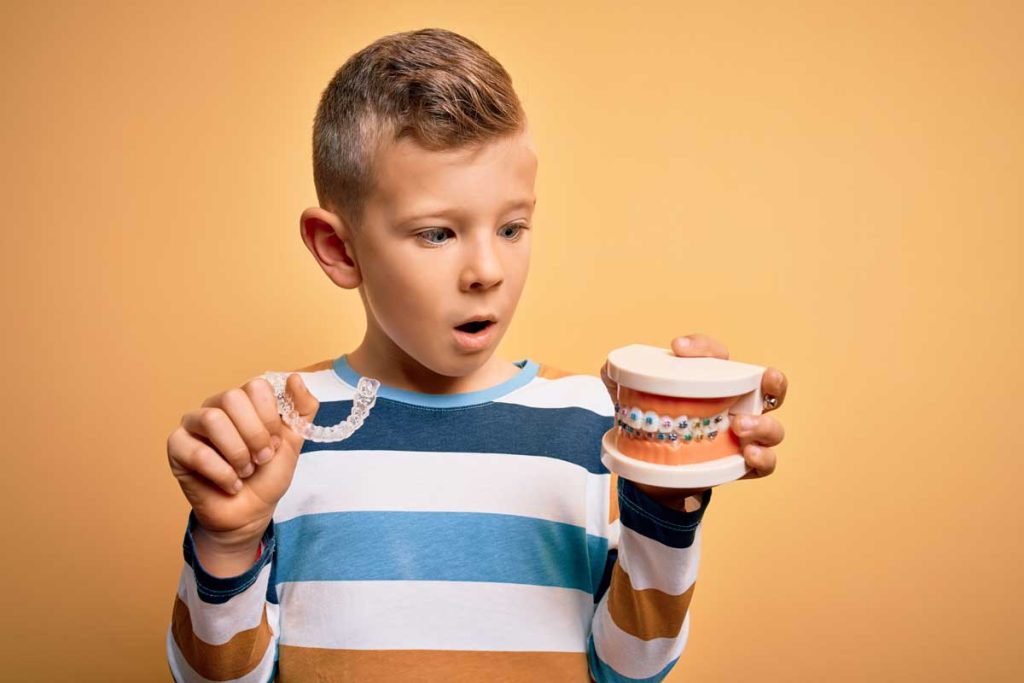Braces and teenagers go hand in hand. Teeth straightening is so common among adolescents it’s almost a rite of passage. And thanks to Invisalign® clear aligners, orthodontic treatment is infinitely more discreet and comfortable than old-school metal wires and brackets.
But if your young child needs orthodontic treatment, you may be wondering whether Invisalign is the right choice.
At Heritage Dental in Tomball, Texas, Dr. Thomas Hernandez and our team hear this concern from many parents. Here, we address the most common concerns about Invisalign to help you make the best decision for your child.
Table of Contents
ToggleReasons young children might need orthodontic treatment
It’s a common misconception that you have to wait until all your permanent teeth have emerged before starting orthodontic treatment. We can spot the signs of future problems in many cases by looking at your child’s baby teeth. Examples of these issues include:
- Probability of overcrowding
- Emerging underbite or overbite
- Deformities caused by thumb or pacifier sucking
- Improper jaw development
Early orthodontic treatment can guide the development of your child’s jaw, so when it reaches full size, there’s adequate room for all the permanent teeth. By catching and treating these problems early, we can often prevent the need for more aggressive treatments later, including surgery.
Two-phase orthodontic treatment for kids
If Dr. Hernandez determines that your child can benefit from early orthodontic care, it typically happens in two phases.
Phase one starts while they still have some baby teeth, usually around age 6-7. In some cases of severe overcrowding, we may need to remove one or more baby teeth to make way for the adult teeth to move in. During this phase, the treatment helps form the jaw bone and direct the growth of the teeth.
After a resting period and most or all of the permanent teeth have emerged, phase two kicks in. This time, the appliance is meant to shift teeth into their proper positions so your child develops a healthy bite that will function well for a lifetime.
Is Invisalign a good choice for kids?
Invisalign changed the look and feel of orthodontic treatment for good. Once it hit the market, teens and adults clamored to trade in their metal braces for the clear and more comfortable snap-in trays.
Among the many advantages of this innovation is that it’s removable, which is an excellent feature for adults but may pose some problems for younger patients.
Invisalign needs to stay in the mouth 20-22 hours a day to do its job, so the first thing you need to ask yourself is: Is your child capable of complying with this rule? If so, Invisalign may be a great choice. If the answer is no, you may be better off with traditional braces that stay on until a dentist removes them.
If your child can keep Invisalign in place all day long, there are several advantages to choosing this highly effective treatment. The makers of Invisalign have developed a version especially for young children called Invisalign® First. Here’s what it does:
- Treats a wide range of alignment issues, even complex problems
- Performs the same job as arch expanders and partial metal braces
- Eliminates the need for gloopy molds that can make kids gag
- Custom fitting via 3D digital imaging
- Removable trays mean brushing and flossing are much easier
- Accommodates erupting teeth and loose baby teeth
Kids are often better at keeping their Invisalign trays in than teens and adults. Children tend to be more adaptable to dealing with foreign objects in the mouth, so they tend to leave them in longer.
When your child switches to a new set of trays at regular intervals throughout the treatment, it may be difficult to snap the new set onto their teeth at first. But with the help of aligner chewies — small rubber balls they can bite down on — the trays click into position, stimulate healthy blood flow to the area, and continue shifting your child’s teeth and jaw into place.
If you’re still on the fence about Invisalign, we invite you to come talk with Dr. Hernandez to find out which orthodontic treatment is right for your child. Call our friendly staff or book it online today to schedule an appointment.



